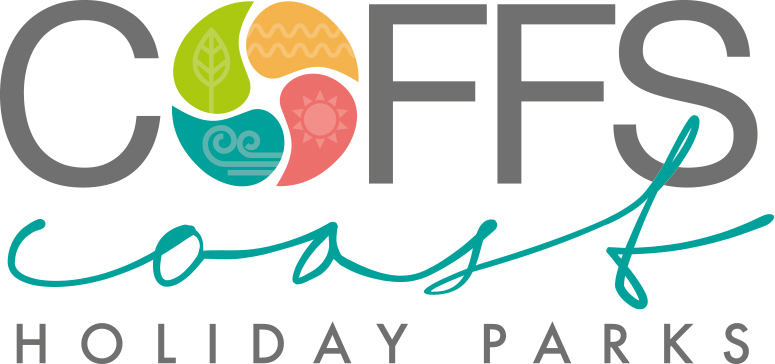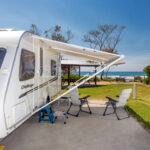Beach Safety on the Coffs Coast. Here is how you and your family and friends can enjoy a day at the beach safely.
To make sure you are safe when swimming at the beach:
Find the red and yellow flags and swim between them.
Look at, understand and obey the safety signs.
Ask a lifeguard or lifesaver for advice before you enter the water.
Get a friend to swim with you.
Stick your hand up, stay calm, and call for help if you get into trouble when in the water.
Conserve your energy by floating on your back and staying calm – this will ensure you have the energy to remain afloat until assistance arrives.
Become familiar with beach safety flags meanings:
The use of safety flags is to help identify hazards and to indicate supervised areas.

Hazards to be aware of:
Rip Currents
Often called a ‘rip’, and are the number one hazard on Australian beaches. The best way to avoid a rip is to swim at a patrolled beach between the red and yellow flags.
How to identify and survive a rip current
Waves
While waves are one of the most enjoyable features of the beach and ocean, they are affected by different conditions.
- Plunging/dumping waves break suddenly and can knock you over and throw you to the bottom with great force. These waves usually occur at low tide where sandbanks are shallow. They can cause injuries to swimmers, particularly spinal and head injuries, so you should never try and bodysurf on one of these waves. If in doubt ask a lifesaver or lifeguard for safety advice.
- Spilling waves have white water tumbling down the face of the wave. They usually have less force and are the safest for body surfing. They are found in sheltered bays where the sea floor slopes gradually, and near sandbanks at high tide.
- Surging waves may never actually break as they approach the water’s edge because the water below them is very deep. These waves occur in rocky areas around cliff faces and where the beach drops off quickly. They can be very dangerous because they can knock swimmers over and drag them back into deep water.
- Large surf should only be attempted by experienced swimmers, and only between the red and yellow flags. Swimmers should also avoid creek and river mouths when a large surf is running because the currents in these areas are often stronger.
Spinal Injuries
Every year, a number of spinal injuries occur around the beach by accident, and through participation in high-risk activities. They most commonly happen by:
- being dumped head first by a wave
- diving head first into the water
- jumping off rocks
- hitting submerged objects other than the sea floor
Any neck soreness or pain should be treated as a potential spinal injury.
Marine Creatures
Australia’s waters are home to many interesting and fascinating creatures, including bluebottles, some of which can be the cause of painful stings!
How to prevent, avoid and treat marine creatures
Rock Fishing
Rock fishing one of Australia’s most popular sports but it can also be dangerous, with an average of eight people losing their lives rock fishing in NSW every year. A lot of these incidents can be avoided by being properly prepared.
Find out how to plan, equipment needed and safety tips
Drinking Alcohol
Every year many people get into difficulty, both on the beach and in the surf, due to the effects of alcohol. Drinking alcohol and swimming is a dangerous combination leading to impaired judgement, lack of co-ordination and reaction time, and an inability to control your body temperature.
Keeping Children Safe
While lifeguards and lifesavers watch over you and your children when in the water, children require constant parent/adult supervision when visiting the beach or when they are around any body of water. You should:
Keep them at arms’ reach at all times.
Put them in bright swimming suits and rash shirts which are easy to see.
Identify an easy to find point on the beach, such as the lifeguard tower, where the child can go to if you are separated.
Beach Safe – check out this Surf Life Saving Australia website for the location, facilities, weather, conditions and lifesaving services for all Australian beaches to help you find the right beach.
Blog courtesy of CCIA











